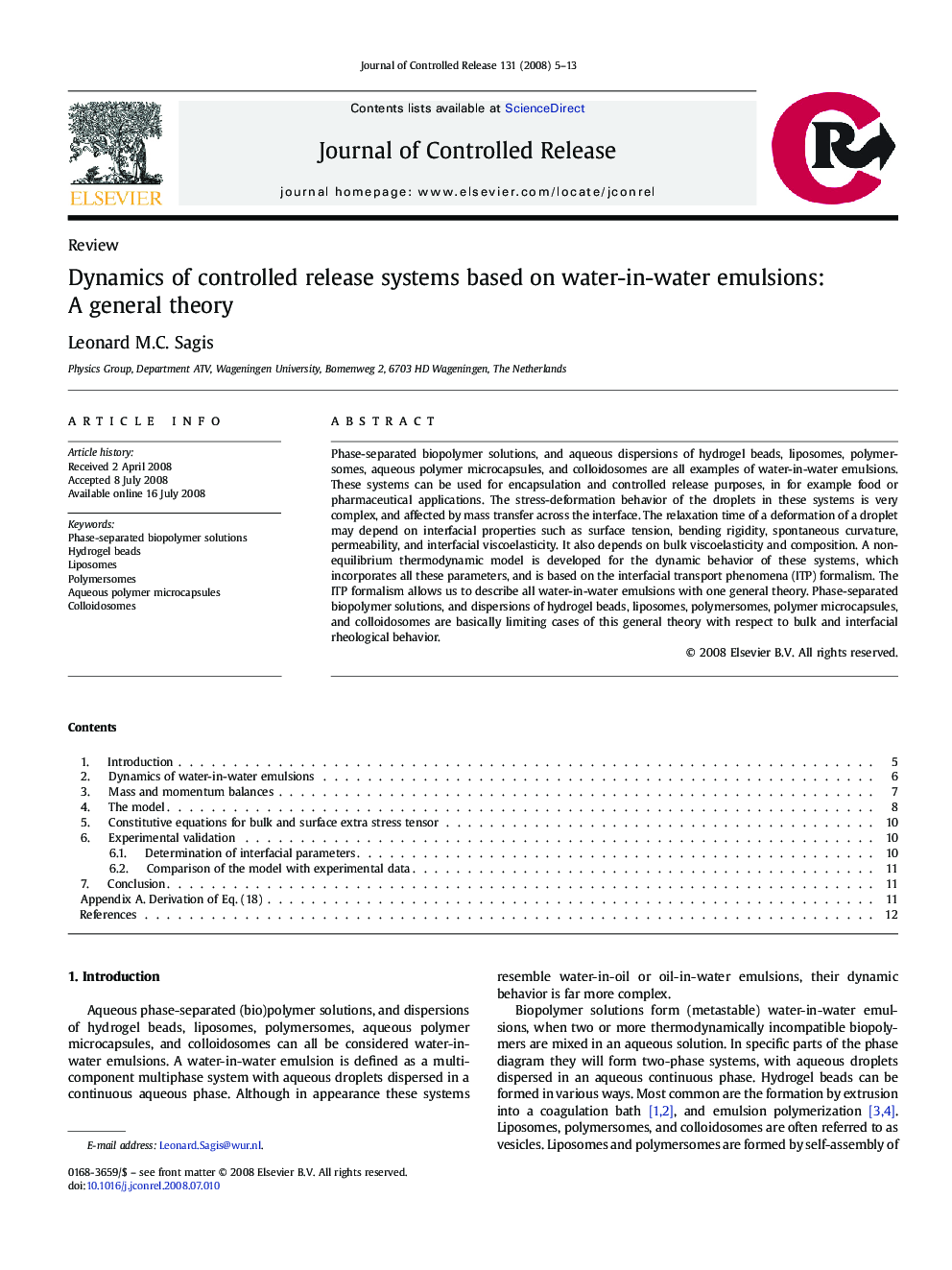| Article ID | Journal | Published Year | Pages | File Type |
|---|---|---|---|---|
| 1426467 | Journal of Controlled Release | 2008 | 9 Pages |
Phase-separated biopolymer solutions, and aqueous dispersions of hydrogel beads, liposomes, polymersomes, aqueous polymer microcapsules, and colloidosomes are all examples of water-in-water emulsions. These systems can be used for encapsulation and controlled release purposes, in for example food or pharmaceutical applications. The stress-deformation behavior of the droplets in these systems is very complex, and affected by mass transfer across the interface. The relaxation time of a deformation of a droplet may depend on interfacial properties such as surface tension, bending rigidity, spontaneous curvature, permeability, and interfacial viscoelasticity. It also depends on bulk viscoelasticity and composition. A non-equilibrium thermodynamic model is developed for the dynamic behavior of these systems, which incorporates all these parameters, and is based on the interfacial transport phenomena (ITP) formalism. The ITP formalism allows us to describe all water-in-water emulsions with one general theory. Phase-separated biopolymer solutions, and dispersions of hydrogel beads, liposomes, polymersomes, polymer microcapsules, and colloidosomes are basically limiting cases of this general theory with respect to bulk and interfacial rheological behavior.
